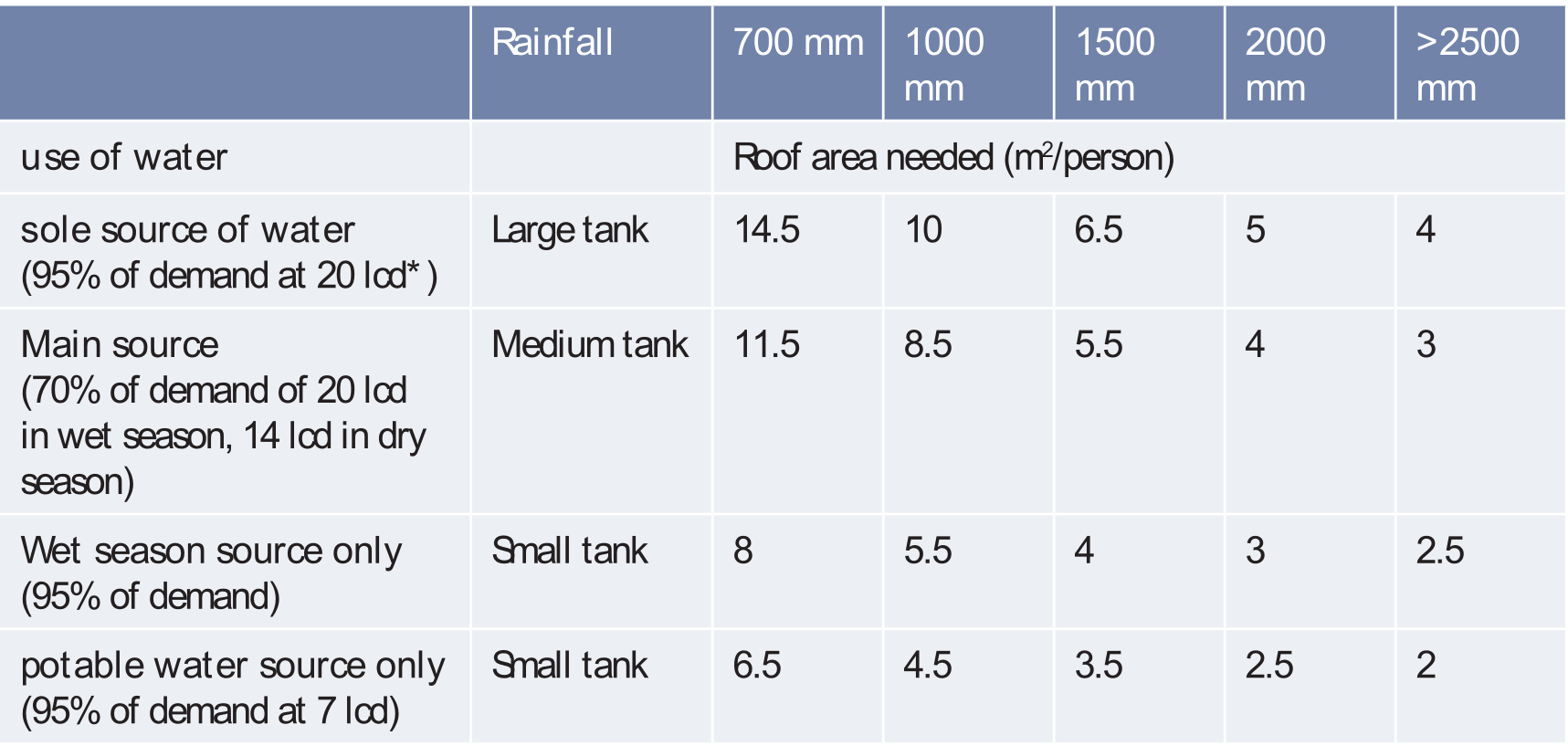Applicability and impact of rooftop/courtyard water harvesting
Land use: Settlements, courtyards, kitchen gardens.
Water use: Rainwater harvested from rooftop usually provides water for domestic use (drinking water, washing, sanitation etc.), irrigation of small-scale kitchen gardens and livestock consumption. Rainwater collected from courtyards is of poorer quality and therefore usually not used for drinking.
Climate: Rooftop-CourtyardWH systems are mainly applicable in areas where three successive months per year have negligible rainfall and in areas where annual rainfall is over 1,000 mm but where the dry seasons is long (up to five successive months with negligible rainfall). However, there are cases where these storage systems are also used in very humid areas in attempt to reduce overflow of the drainage systems in settlements and out of ecological reasons. Some examples of annual rainfall where Rooftop-CourtyardWH is applied are 250 – 500 mm (Botswana), 500 – 750 mm (Tajikistan), 750 – 1,000 mm (Nepal) and 1,700 – 2,500 mm (Tonga).
The table below shows the roof area required (m2/person) under different rainfall regimes.

* lcd: liters per capita per day (adapted from Thomas & Martinson 2007)
Scale: Rooftop-CourtyardWH systems constructed at private households are managed directly and entirely at household level. Management of the systems constructed at institutional buildings (schools, hospitals etc.) often require management clarifications.
Land ownership and land / water use rights: Since Rooftop-CourtyardWH technologies are usually established on individually titled land of a private household / school the WH system user has the full right to utilization of the water. Skill / knowledge requirements: While simple Rooftop-CourtyardWH systems do not require detailed technical knowledge, more complex systems require skilled labour especially for the storage facilities. Therefore, where labour is expensive it is advisable to introduce simpler types. Labour requirements: Comparatively low labour requirements; most demanding is the construction of the storage tanks. (Mekdaschi & Liniger 2013)
Rooftop-CourtyardWH has many positive effects and benefits. Here you can see a list of them.
